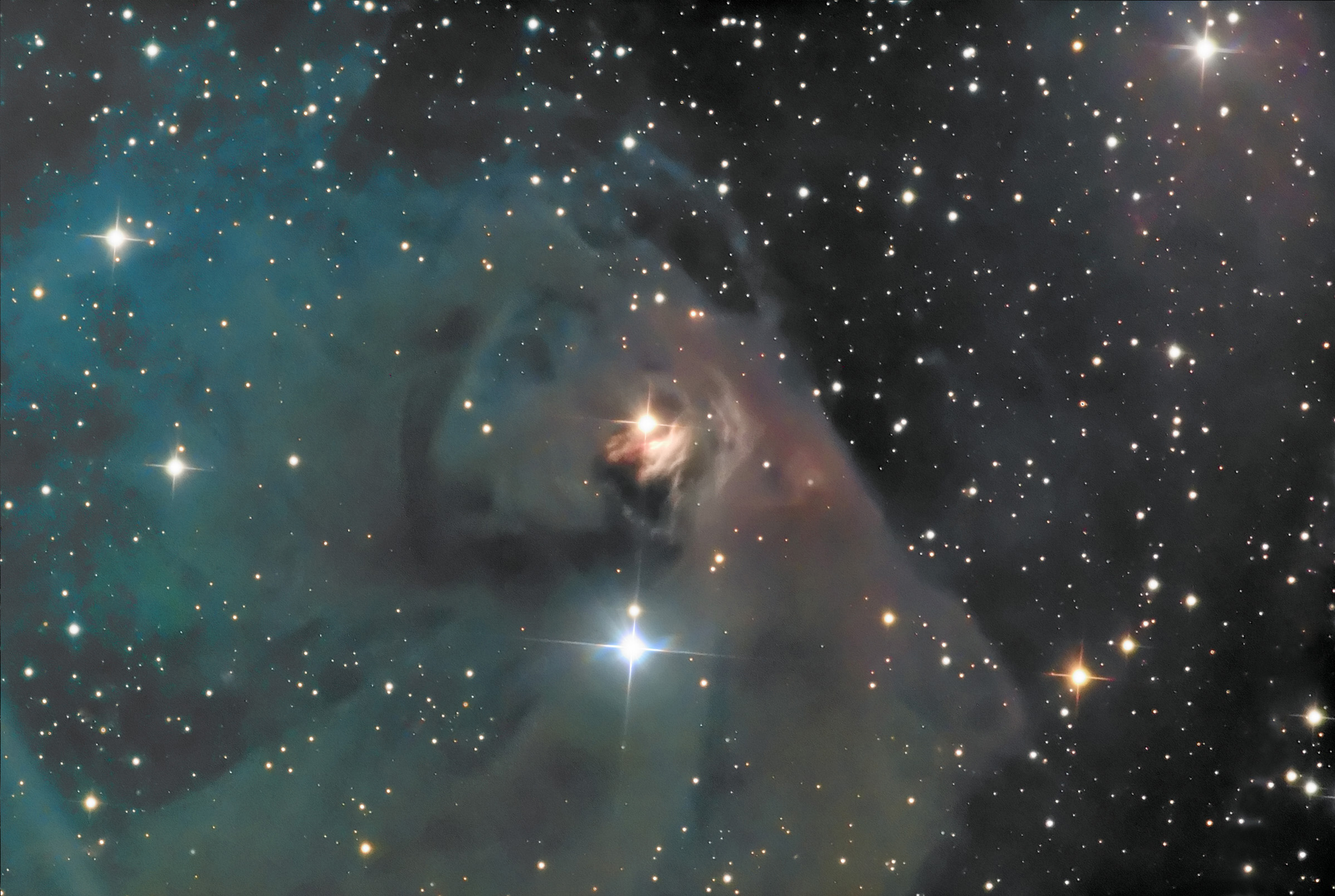 This apod had a really clever name; it's called "Reflections on the 1970s". At first, I thought it was a reference to the decade, but then I found out that this is a picture of the NGC objects 1977, 1973 and 1975. They are usually ignored by astronomers who focus on the bright star-forming region in the Orion Nebula nearby. NGC 1977 is the most prominent of the nebulas in this photo. It is just above the center. All three are reflecting light because of the interstellar dust surrounding them. The picture was taken in New South Whales, Australia.
This apod had a really clever name; it's called "Reflections on the 1970s". At first, I thought it was a reference to the decade, but then I found out that this is a picture of the NGC objects 1977, 1973 and 1975. They are usually ignored by astronomers who focus on the bright star-forming region in the Orion Nebula nearby. NGC 1977 is the most prominent of the nebulas in this photo. It is just above the center. All three are reflecting light because of the interstellar dust surrounding them. The picture was taken in New South Whales, Australia. Friday, December 21, 2007
2.8 APOD
 This apod had a really clever name; it's called "Reflections on the 1970s". At first, I thought it was a reference to the decade, but then I found out that this is a picture of the NGC objects 1977, 1973 and 1975. They are usually ignored by astronomers who focus on the bright star-forming region in the Orion Nebula nearby. NGC 1977 is the most prominent of the nebulas in this photo. It is just above the center. All three are reflecting light because of the interstellar dust surrounding them. The picture was taken in New South Whales, Australia.
This apod had a really clever name; it's called "Reflections on the 1970s". At first, I thought it was a reference to the decade, but then I found out that this is a picture of the NGC objects 1977, 1973 and 1975. They are usually ignored by astronomers who focus on the bright star-forming region in the Orion Nebula nearby. NGC 1977 is the most prominent of the nebulas in this photo. It is just above the center. All three are reflecting light because of the interstellar dust surrounding them. The picture was taken in New South Whales, Australia. Friday, December 14, 2007
2.7 APOD
 The bright star in the center of the photo is T Tauri. T Tauri is the prototype for the type of stars named after it. These are stars that have recently been revealed from the gasous clouds in which they were formed. They are usually a few million years old, and still in the early stages of development. The large cloud next to T Tauri is known as Hind's Variable Nebula. Hind's Nebula is interesting because it can vary drastically in brightness. The scope of the photo is about 4 lightyears across.
The bright star in the center of the photo is T Tauri. T Tauri is the prototype for the type of stars named after it. These are stars that have recently been revealed from the gasous clouds in which they were formed. They are usually a few million years old, and still in the early stages of development. The large cloud next to T Tauri is known as Hind's Variable Nebula. Hind's Nebula is interesting because it can vary drastically in brightness. The scope of the photo is about 4 lightyears across.Friday, December 7, 2007
2.6 APOD
 This is a spiral galaxy known as M47. It is composed of about 100 billion stars and is located 32 million light-years away from Earth, near the constellation Pisces. The arms of the spiral are made up of dust and gas, as well as blue star clusters. The red sections in the galaxy are star forming regions. The color comes from hydrogen gas. M47 is about 30,000 light-years across, and this photo was constructed from shots taken by the Hubble Space Telescope between 2003 and 2005.
This is a spiral galaxy known as M47. It is composed of about 100 billion stars and is located 32 million light-years away from Earth, near the constellation Pisces. The arms of the spiral are made up of dust and gas, as well as blue star clusters. The red sections in the galaxy are star forming regions. The color comes from hydrogen gas. M47 is about 30,000 light-years across, and this photo was constructed from shots taken by the Hubble Space Telescope between 2003 and 2005.
Subscribe to:
Posts (Atom)